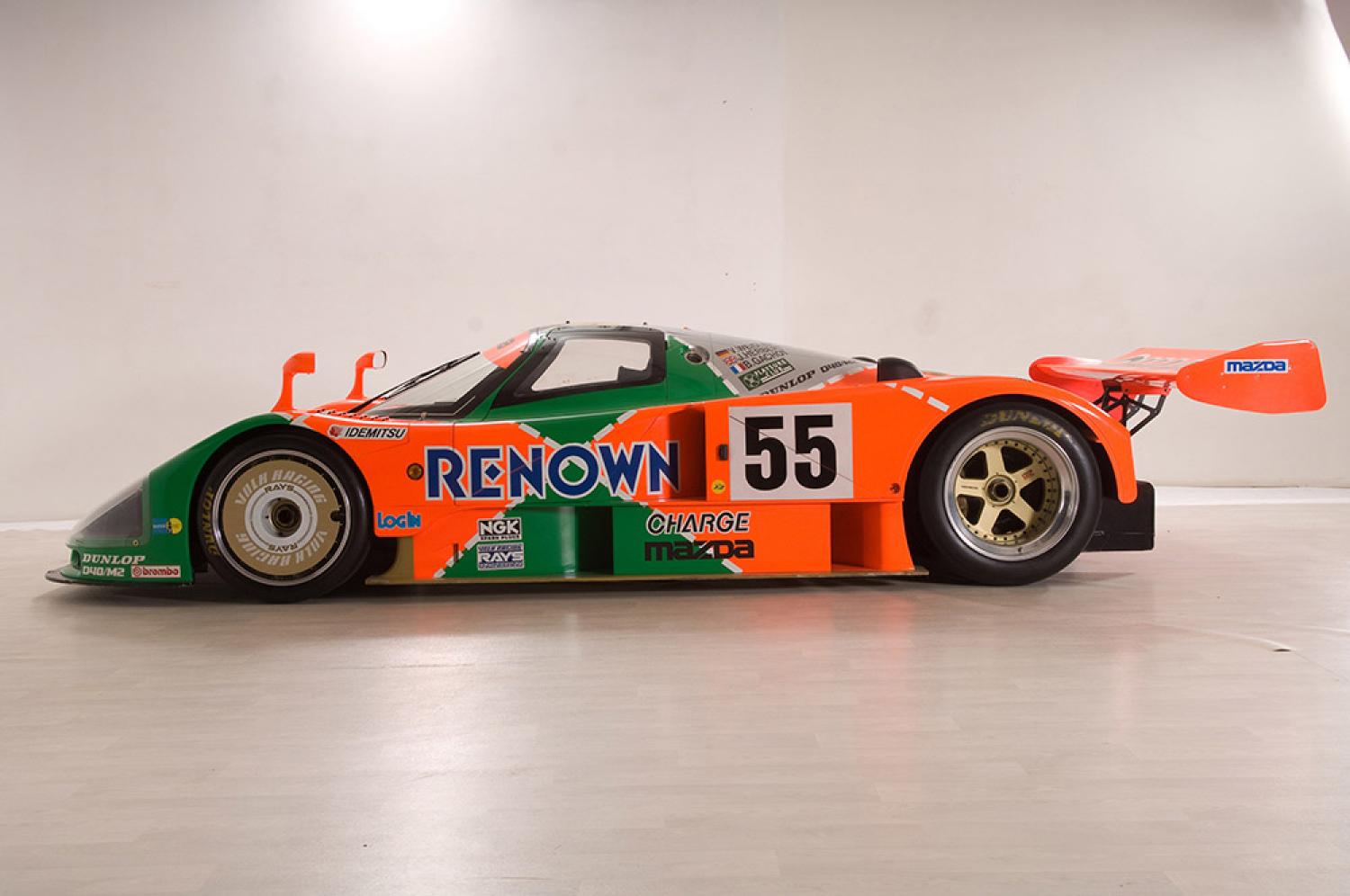Japan may have been late to the game in participating in the 24 Hours of Le Mans, but it has never stopped since. In 1973, the Sygma-Mazda set the tone for the country's competitive potential, and the following year, Sygma made it to the checkered flag (though unranked) with Yojiro Terada at the wheel. Mechanical problems relegated the car to the garage for half of the race, proving the tenacity and perseverance of the Japanese technicians and drawing well-deserved admiration. Though Mazda's private 1975 European participation was short-lived, the Japanese manufacturer officially returned in 1980, 1981 and 1982. Beginning in 1983, Mazda demonstrated its mastery of the twin-rotor rengine with a win in the Group C Junior class. The following year, the marque won again, in Group C2, before solidifying its reliability with a Lola chassis in 1985. The introduction of a tri-rotor motor in 1986 marked the pinnacle of the technology. In 1987, Mazda finished seventh and then 15th the next year. In 1989, its quad-rotor engine nabbed the seventh (first in the IMSA), ninth and 12th spots.
In 1990, the manufacturer vied for a possible podium finish but didn't make it happen until 1991. Taking advantage of the transition between the Group C and 3.5-liter Atmospheric Sport classes, Mazda fielded three 787Bs in the 24 Hours of Le Mans. But the Japanese marque was up against three Sauber-Mercedes C11s, four Jaguar XJR-12 direct descendants of the 1990 winner, two rookie Peugeot 905s and an armada of 15 Porsche 962s! To prepare for the race and devise a strategy, Mazda teamed up with ORECA and appointed as advisor Jacky Ickx, the seven-time winner of the race and win record-holder at the time. The 787Bs proved capable, reliable and fuel efficient. and the #55 shared by Bertrand Gachot, Johnny Herbert and Volker Weidler claimed the top step on the podium ahead of two Jaguar XJR-12s. Its flashy colors and especially the shrill noise of its quad-rotor engine left an indelible mark on the spectators at that year's race.
Masanori Sekiya, the first Japanese driver to win
On the heels of that resounding success, the 1990s saw more major Japanese manufacturers take on the 24 Hours. In 1995 came the victory of Masanori Sekiya, the first Japanese driver to win the race, at the wheel of the McLaren F1 GTR entered by Kokusai Kaihatsu Racing. Since then, legend has it that any driver to get married at Le Mans, as did Sekiya, shall win shortly thereafter. The dawn of the new century marked the arrival of Audi and a hiatus in Japan's participation in the 24 Hours. A second Japanese driver, Seiji Ara, reached the top step on the podium in 2004. Toyota came to challenge the German manufacturer in 2012, then Porsche who won in 2018 and 2019, after failing to do so in 2016 and 2017. Also worth noting is the recent return of great Japanese talents behind the wheel such as Nakajima and Kobayashi.
The Mazda on display in the 24 Hours Museum was donated by the marque as a reminder of its exceptional achievements at Le Mans. It is an authentic racing car (04 chassis) equipped with presentation, non-operational mechanics and decorated in the fluorescent colors and unique graphics of the 1991 winner. The car is often requested throughout Europe for its remarkable and memorable victory. A few years ago, the actual 1991 winner returned to Le Mans as a teaser ahead of the 24 Hours of Le Mans and Patrick Dempsey took the wheel for a few laps of the famous circuit. The American star was honored by the special invitation and enjoyed allowing the spectators to hear the inimitable sound of the car's quad-rotor engine echoing down the pit straight and the Mulsanne Straight.
At the 24 Hours of Le Mans Museum, the ACO tells the epic tale of motoring in La Sarthe and the success of its legendary international race through 140 select vehicles. Bentley, Ferrari, Jaguar, Ford, Porsche, Matra, Audi, Peugeot, Toyota... iconic models illustrating the greatest names of motorsport take visitors through almost a century of history at the world’s greatest endurance race. Temporary exhibitions add a topical note to the permanent displays which can be extended with a visit of the world-famous Circuit des 24 Heures du Mans.
>> Find out more about the 24 Hours of Le Mans Museum <<



